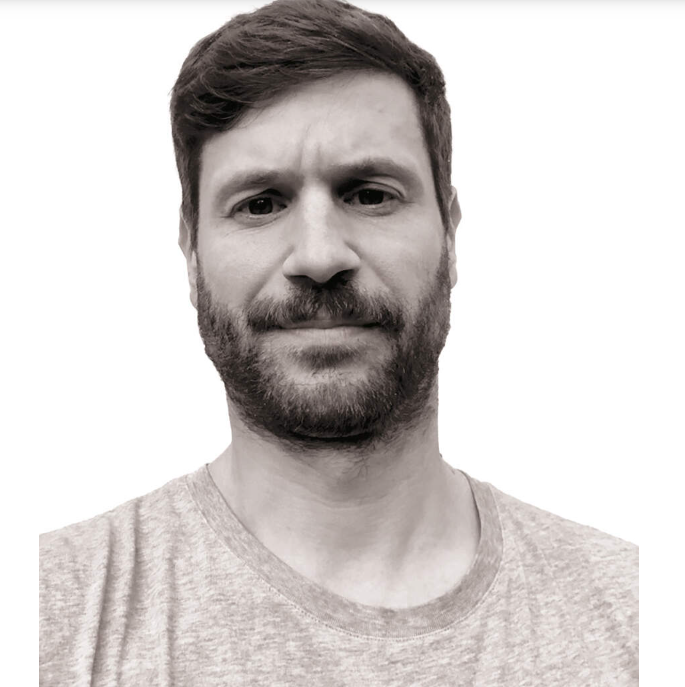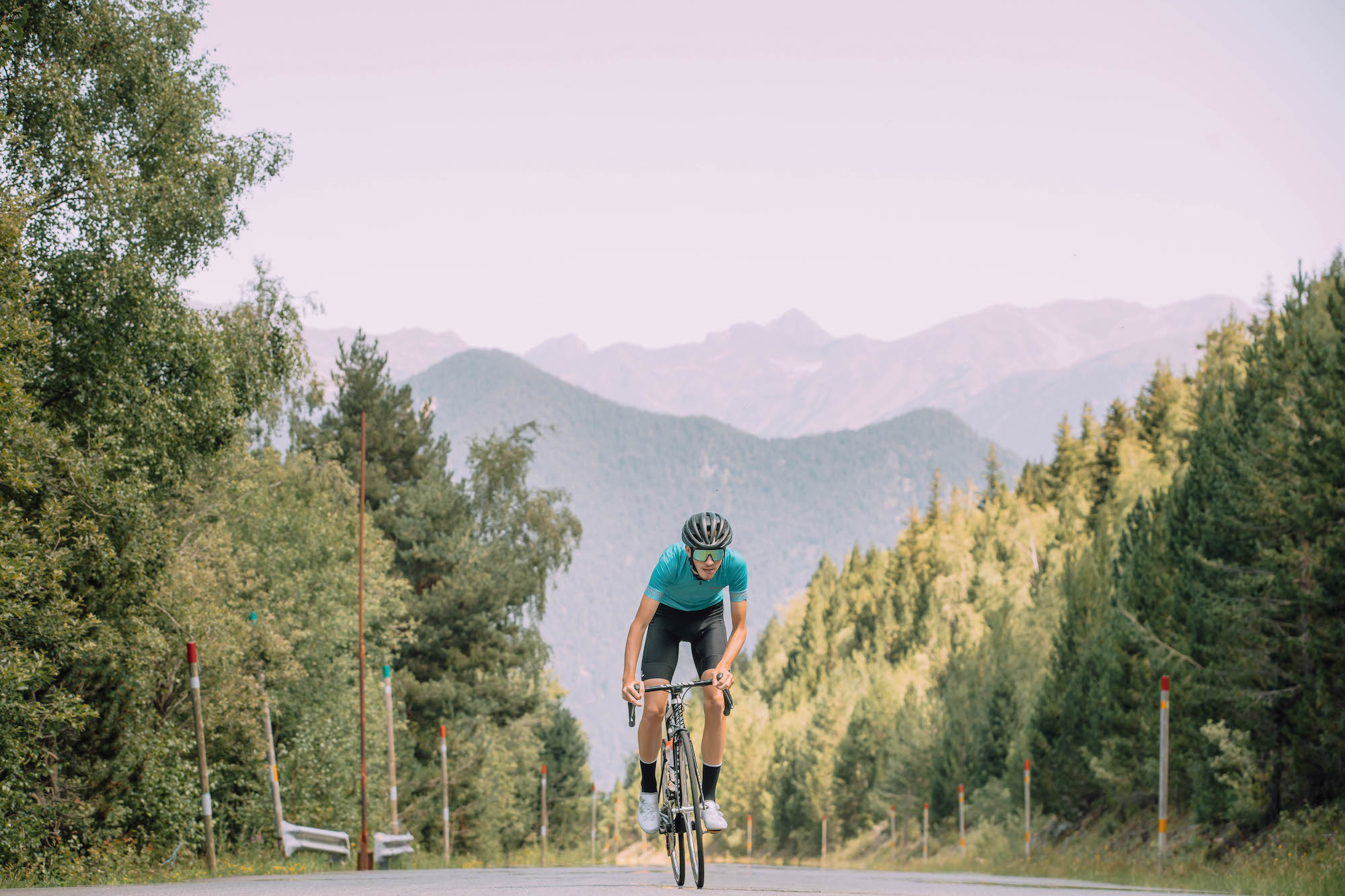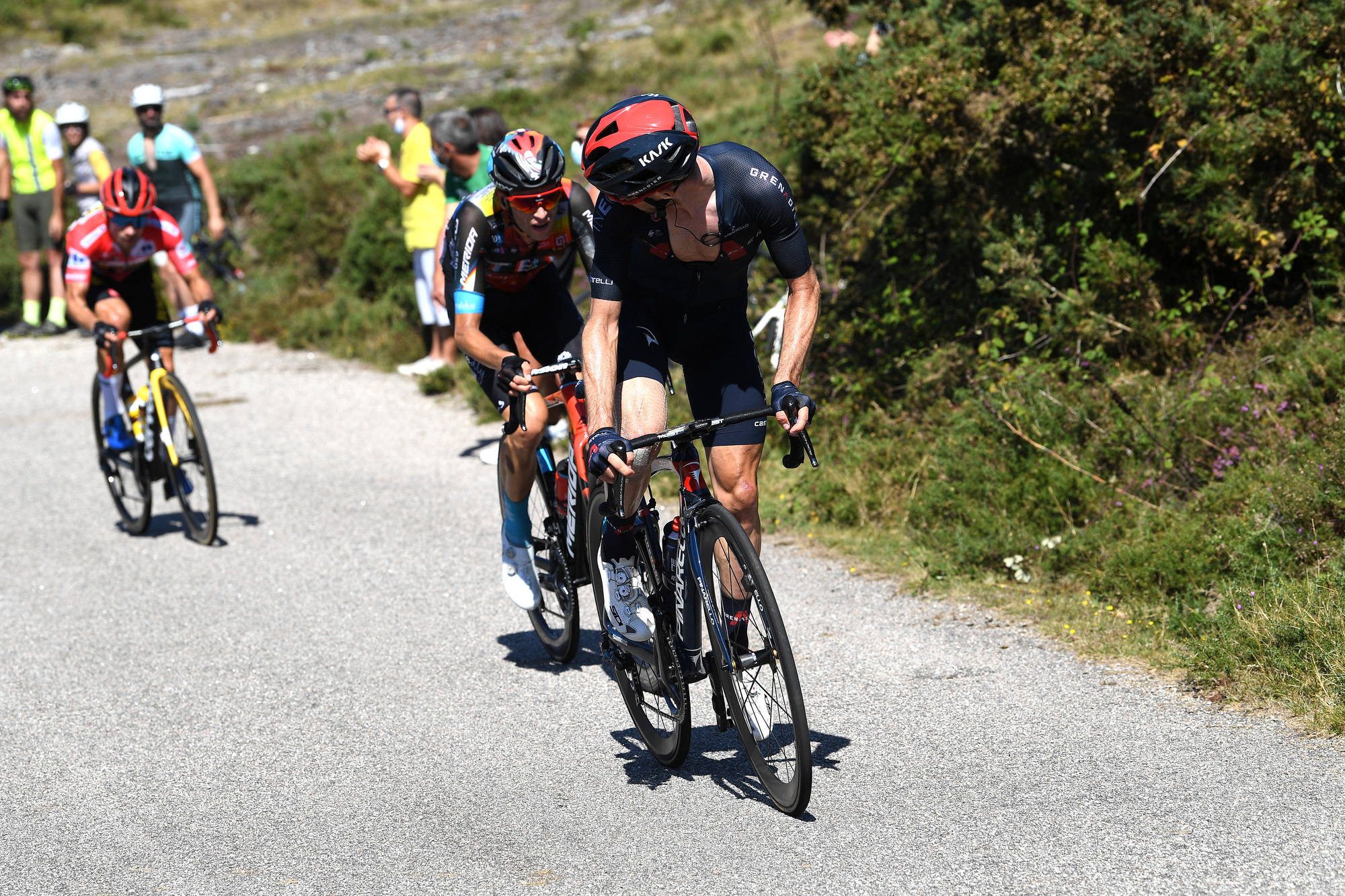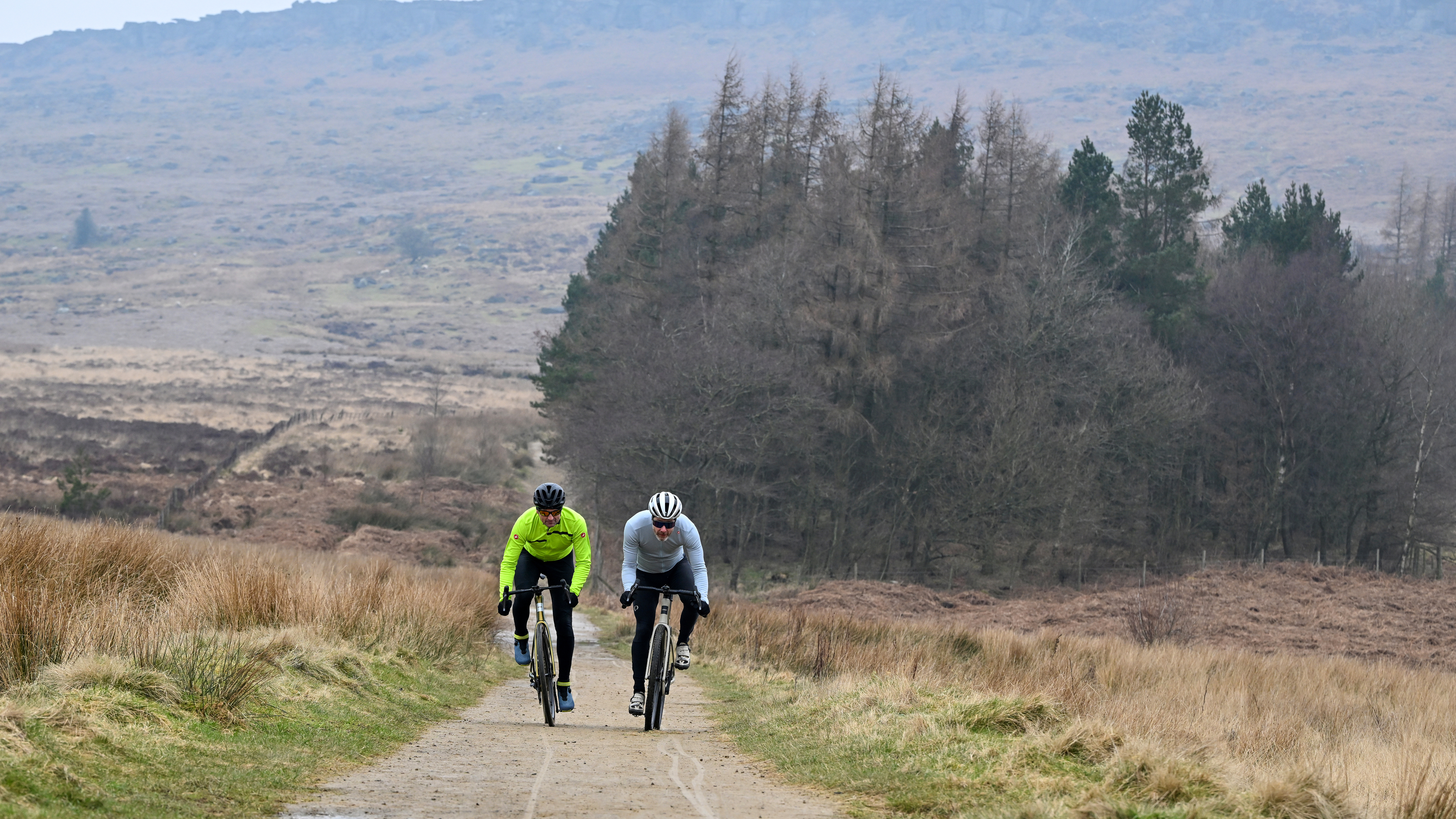Why you need to stop worrying about your weight
Having learnt the hard way about bodyweight obsession, Charlie Graham-Dixon goes in search of a healthier perspective


This article was originally published in Cycling Weekly magazine in 2019
Cycling websites and fitness magazines publish endless features exploring how riders can and should lose weight, through diet and training, to improve their performance.
When super-lean pros take to social media to post photos of their legs looking like road maps of bulging veins, we amateurs sit back in wonderment. But focusing too intensely on weight can have unintended consequences.
Lightest isn’t always best, and the reality is, pros and amateurs are very different. As I found out to my cost, some amateur riders really need to stop worrying about their weight.
Despite the now widespread acceptance that it’s aerodynamics (above weight) that offers cyclists ‘free speed’, the relationship between weight and performance is inextricable.
Riders have long sought the lightest bikes to enhance performance on the road, and road bikes and related componentry continue to become ever lighter. Recognising this relentless clamour for lightness, the cycling industry has pushed the message, ‘lightest is best’.
Away from hardware, bodyweight has come under even more intense scrutiny as riders strive to reach their ideal race weight — that magical number, the perfect balance between power, efficiency and lightness.
Get The Leadout Newsletter
The latest race content, interviews, features, reviews and expert buying guides, direct to your inbox!
From WorldTour pros to Sunday club riders, cyclists wanting to go faster for longer follow a mantra epitomised by former pro David Millar: “I am light, I am strong.”
I freely admit, I’ve had my own weight difficulties. At 6ft 1in and 67-70kg, I am a lightweight rider who performs best on climbs, particularly steep, longer gradients where my low weight helps me make quicker progress relative to my thicker-set rivals.

If you are focusing on weight above all else, everything will go wrong
However, after completing an intense race training block recently, my performance began to suffer: my motivation waned, and I felt unusually tired. Arriving home from rides, I’d feel lightheaded; alarm bells started to ring.
More worryingly, my weight fell considerably, from 68 to 63kg in around two weeks. Many of these symptoms pointed to overtraining, which likely played its part, but I also discovered I had a virus, necessitating a three-week break from riding.
I began to have worries and doubts I’d never had before: had my low weight made me susceptible to illness? Had I become simply too skinny? So that’s what I aim to find out here: when does light become too light, and how do you know when you’ve hit your optimum?
>>> How to reach your ideal race weight for cycling
When I ask David Millar, he tells me to watch out for blurred objectives.
“If you’re getting ill, you’re doing things wrong,” he says. “You’re putting your body under too much stress, which compromises performance. It’s not rocket science — you’ve got to be healthy, well-trained and the optimum weight for both your body and cycling objectives. That’s the only thing to focus on, not just getting skinny as an end in itself.”
The temptation among amateur riders to reduce body weight is understandable: on the TV, they see pure climbers competing in Grand Tours, apparently helped by their super-lean physiques. But we need to bear in mind that pros have dedicated teams of nutritionists and doctors monitoring their weight and health.
That pro cyclists are role models for amateurs is inevitable, but in an era when the internet and social media provide aspirational and often unrealistic body goals, it’s more important than ever to safeguard a healthy sense of perspective.
“If you’re training properly, then weight will come off and, by default, should calibrate correctly,” adds Millar. “You should be at an optimum weight for whatever you’re doing, whether 10-mile TTs or the Etape du Tour.”

Comparing yourself to the physiques of the pros can be unhelpful
While the veiny legs of a pro on Instagram may look impressive, these kinds of images, according to Millar, fail to tell the whole story.
“It’s not the reality,” he says. “The fact is, these photos may have been posted after incredibly hard training rides or while the riders were dehydrated. I, and many others, have to ride thousands of miles to get veins showing in our legs.”
Hard as it may be to imagine, the now infamous images of former Grand Tour climber Michael Rasmussen’s almost emaciated torso (and stark tan lines!) would at one time have been inspiring to many amateurs. But when it emerged that Rasmussen was using a variety of performance-enhancing drugs, including the steroid cortisone, the images took on a more troubling, less inspiring meaning.
Fast-forward to today and many pros use social media to promote their super-lean bodies as badges of honour, inevitably inspiring new amateurs. Following the ongoing controversies and allegations surrounding the misuse of TUEs such as triamcinolone, David Millar, writing in the New York Times, claimed this drug got him to his lightest ever weight:
“I looked like a machine, muscle fibers were visible and a road map of veins crisscrossed my entire body.”
I hope it goes without saying that no amateur in their right mind would want to take risks with such a powerful and potentially dangerous drug.
Measuring weight
What is the most reliable way to measure weight, and how closely should it be monitored? BMI was once regarded as a reliable measurement, but it has fallen out of favour as unreliable and outdated.
“BMI is completely misleading,” Pav Bryan of Direct Power Coaching tells me. “It doesn’t take into account important body specifics such as muscle mass, bone density or overall body composition. If you are full of muscle like a bodybuilder or rugby player, you are almost certainly healthy, but BMI will categorise you as overweight or obese.”
Former GB cycling coach and physiologist Mehdi Kordi agrees: “BMI can be a very misleading metric on two major fronts. Firstly, it is based on two variables — height and body mass — and takes no account of body composition such as body fat and muscle mass. Secondly, in cycling, height is a redundant and meaningless measure and body mass is part, but not the sole determinant, of acceleration and climbing ability.”
If BMI is unreliable, does measuring body fat percentage represent a more conclusive metric? Again, Pav Bryan urges caution: “Body fat percentage can be really tricky to work with, as depending on the measurement device, readings vary. I used to use body composition scales reading around 11 per cent body fat, whereas body scanning devices read closer to 18 per cent.”
Weight watchers! How to stop worrying excessively about your weight
Avoid weighing yourself more than once every fortnight Listen to and trust your body — it is unique, and what works for others isn’t necessarily best for you Don’t take your body-image cues from social media There is no perfect weight, but a steady improvement in performance will show you are healthy — if necessary, take a break to recalibrate Keep enjoying cycling — it’s a pleasure, not a chore Retain a cycling/life balance — you need to relax and enjoy treats sometimes
Dexa and BodPod scanning is the only failsafe way to accurately measure body fat percentage, but it’s expensive — and besides, is it really worth it?
Given the high cost of accurate and useful measuring devices, amateur riders are better off listening to their bodies rather than shelling out on expensive machinery. Despite the number of electrical impedance devices now available to the consumer, offering cheap access to body composition data, the more accurate devices come at a premium price.
That said, there is a cost-free and very reliable alternative, as Bryan notes: “Personally, I think the best home method to monitor body fat percentage is to simply check yourself in the mirror. You could take pictures to monitor progression. Body calipers are also a great and cost-effective tool.”
While there exists the temptation for cyclists to emulate their heroes, whether riding the same training roads or buying the same bikes, attempting to imitate the physiology of your favourite GC rider is best avoided.
“At times it can be helpful to track body fat/body composition,” says Kordi. “However, my advice for the majority of athletes, from amateur to elite, would be: get the basics right, which is as simple as eating and training well.
"Most athletes know what shape they are in from their diet and the volume and type of training they have been doing. I would not recommend using home monitors such as bioelectrical impedance, as their validity and reliability aren’t guaranteed.”
More important than simply measuring body weight is the interplay between weight and power — as emphasised by Millar: “If you increase your power-to-weight, you’ll go faster up hills, but if that correlation goes wrong and you lose power as a result of losing weight, then the dieting was pointless.”
Watchfulness or obsession?
The experts’ assertions that riders should listen to their bodies rather than investing in costly measuring devices is sound advice, but there are times when trusting one’s own judgment isn’t so easy — for example, when training and diet control become obsessive.
In my case, looking back, I can see that there was a period of time when my approach to training and diet veered towards obsession. When I discovered my ability to climb, I gained confidence, and this confidence, combined with continuing weight loss from regular training, led me to believe that losing weight was key to ever-improving climbing performance. If I wanted to keep getting faster, I thought, I’d need to monitor everything I ate and drank.
Where once I used to enjoy a few beers or eat cake and think nothing of it, I now felt guilty about indulging in these pleasures — worrying I might put on weight and counteract my training gains.
“Many amateurs become completely weight-obsessed,” Millar says. “If it’s not compromising their results or quality of life, then I guess it’s OK, but at the amateur level you have to be careful you don’t become a neurotic, obsessive person for no reason whatsoever.”

“Tracking calories can be really useful, but it can also be a platform for trouble,”
As a coach, Bryan is acutely aware of these risks and has to watch carefully for danger signs: “It’s something I see a lot, clients starving themselves. In cycling, where we tend to become very obsessed with performance and gains, it can become very easy to slip into poor eating habits or even an eating disorder.”
There is a vast difference between being disciplined about your eating and becoming overly hung up on weight loss.
“Tracking calories can be really useful, but it can also be a platform for trouble,” says Bryan. “If you choose to do so, be very honest with what you are eating and don’t aim to lose too much too quickly. Small losses are better than big ones, and it takes time.”
Conclusion
Evidently, each discipline of cycling requires a different physique: the lean, lightweight climber; the muscular, powerful sprinter; the tall, long-limbed TT specialist. How to work out the exact best weight for you?
Bryan believes that, for most cyclists, there is an optimum weight range, rather than a precise to-the-kilo figure at which health and performance thrive.
“It’s not a fine line between over and under-weight, and the line is blurred for athletes, as it is entirely down to individual factors. I would suggest an athlete finds events that suit them — for example, a featherweight cyclist with good power-to-weight should recognise their advantage on hillier courses... Play to your strengths.”
While regular and varied training is a clear path to improvement, no rider should ignore their individual strengths. Talent and potential are substantially determined by body type, so riders should use their strengths and aim to reach the weight and shape at which they feel confident, healthy and strong. Let your performance guide you: if your improvement stalls, ask yourself why.
It is vital to bear in mind your health and happiness, too; if you worry too much about hitting weight targets, you’ll run into trouble — just like I did. For the majority of riders, the ‘ideal weight’ is not necessarily a numerical figure but a broader physical and mental plane — a solid foundation for ongoing improvement — guided not only by hard data.
Get to know your body so that you can sense when things feel right or wrong, and detect when you’re slipping towards obsession. When my performance began to be compromised by a loss of body weight, I sensed something was wrong and took a break. Watch for the signs, and maintain a sense of balance.
Millar sums it up succinctly: “If you are focusing on weight above all else, everything will go wrong.”

Thank you for reading 20 articles this month* Join now for unlimited access
Enjoy your first month for just £1 / $1 / €1
*Read 5 free articles per month without a subscription

Join now for unlimited access
Try first month for just £1 / $1 / €1
Charlie Graham-Dixon is a freelance journalist and keen road rider based in London.
-
 Madison Flux short sleeve jersey review: functional and affordable
Madison Flux short sleeve jersey review: functional and affordableThe road cycling jersey delivers top performance for a budget-conscious cyclist
By Hannah Bussey
-
 I pitched a top-end all-road bike against a top-end gravel bike, here's what I found
I pitched a top-end all-road bike against a top-end gravel bike, here's what I foundMulti-surface machines go head-to-head-to-head and categories clash as Tim Russon rolls up for the ultimate do-it-all bike showdown
By Tim Russon